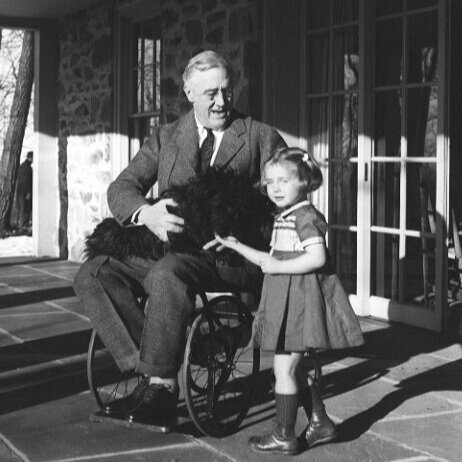A Pained Life: Prisoners of Pain
/By Carol Levy, PNN Columnist
This being President’s Day in the United States, I was reminded of a popular quote attributed to President Franklin D. Roosevelt.
“Men are not prisoners of fate, but only prisoners of their own minds," FDR said.
This is a wonderful quote. For someone in a wheelchair and so physically limited, and who was able to make a very successful and hopefully fulfilling life, FDR’s philosophy makes sense.
Not so much for those of us with intractable pain. Our minds may not be imprisoned, but our bodies are. Our fate is to have pain.
This is not to diminish what President Roosevelt accomplished, or the successes of others with physical or mental limitations. President Roosevelt could not walk without assistance. That was not something he could change.
But pain changes. One moment we may have so little pain we can do the dishes, play with the kids or, in my case, read a book or sing in a chorus. Then boom! The pain, the pain. I can't continue with what I want to do.
We become prisoners of pain.
As many of us know, the invisibility of our pain makes others skeptical. Out of sight, out of mind. I don't see your pain, ergo it doesn’t exist. We are different in so many ways from people like FDR who have disabilities that are plainly visible.
This seems to include even the ability to study and report on findings related to chronic pain. I was researching deep brain stimulator implants for chronic pain, because of the one I recently had implanted. I read a number of studies. Some authors reported good outcomes, others not so good.
The more I read, the more I realized that research on procedures and treatments for chronic pain cannot be interpreted the same way as studies about cancer and other diseases. Did the cancer treatment have an effect that benefited the patient? Yes, they lived longer and the cancer did not spread. Or perhaps the outcome was no, the cancer metastasized and the patient died.
For us, the conclusions are not as simple. The answers are subjective. Is your pain better? Is it worse? Is it the same? No matter how one answers, can it truly be comparable with those of others in the same study?
On a pain scale of 1 to 10, what I call a one may not be what you consider a one. By the same token, my 10 may not be your 10, so how can there be a comparison?
I was once asked if I would be willing to take a survey on suicides or attempted suicides by pain patients. I declined. Absent a suicide note specifying that “I cannot take the pain anymore,” there is nothing but speculation and supposition as to someone’s motive and to what degree it was related to chronic pain.
We are all prisoners of a disorder that is difficult to treat, much less cure. It will require imagination to put us all in one category and find ways to help us.
Carol Jay Levy has lived with trigeminal neuralgia, a chronic facial pain disorder, for over 30 years. She is the author of “A Pained Life, A Chronic Pain Journey.” Carol is the moderator of the Facebook support group “Women in Pain Awareness.”




